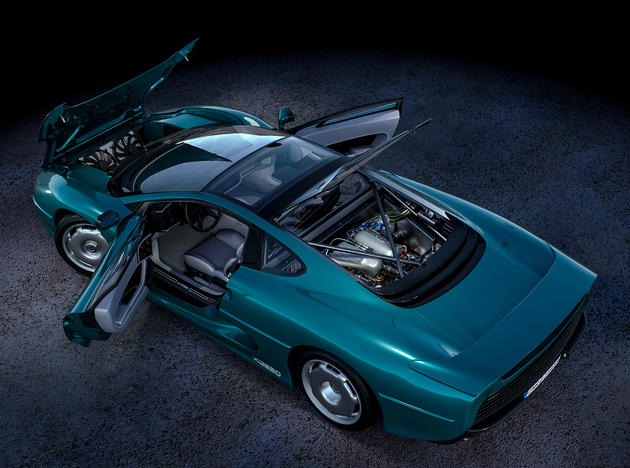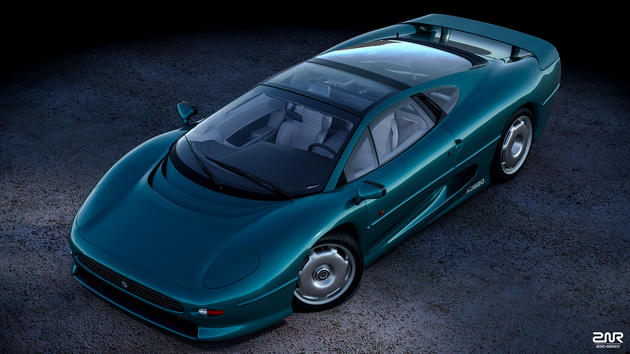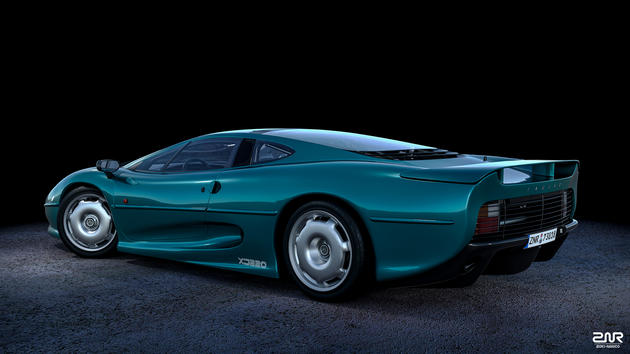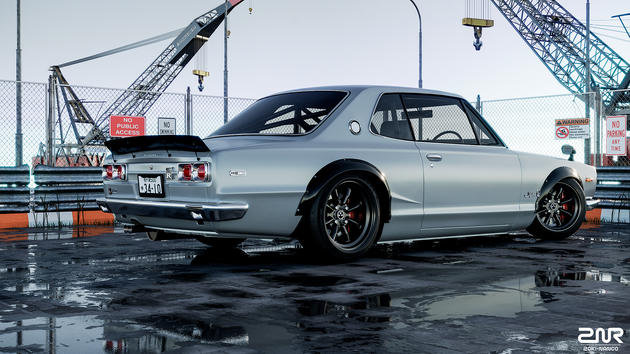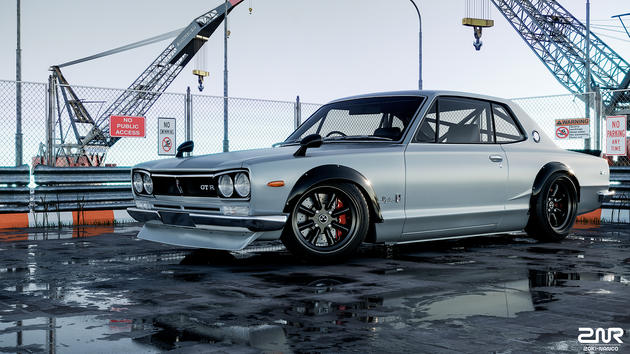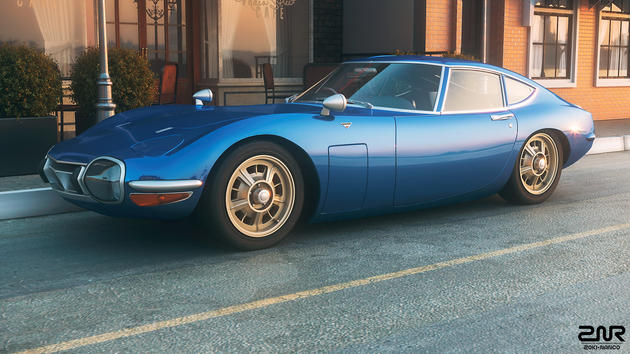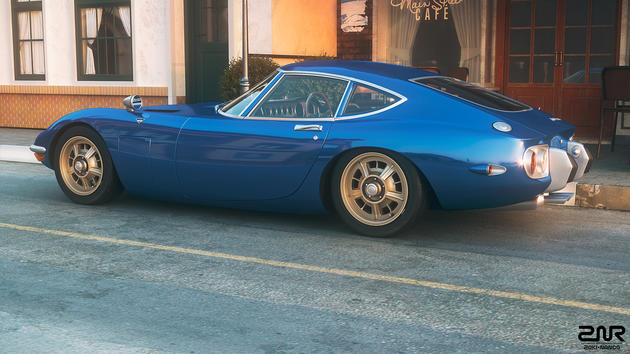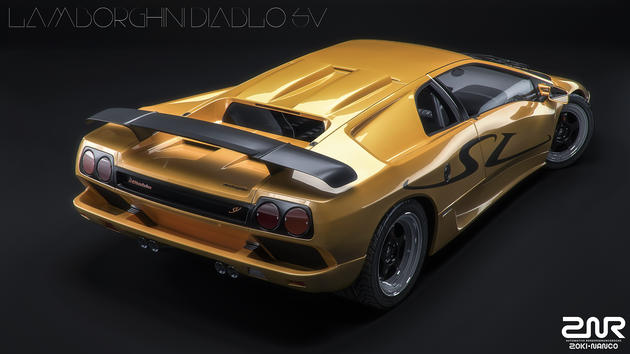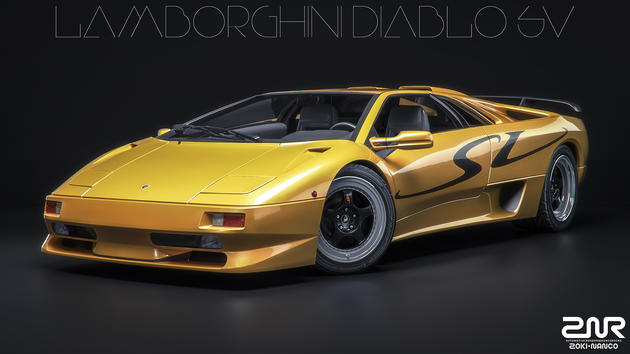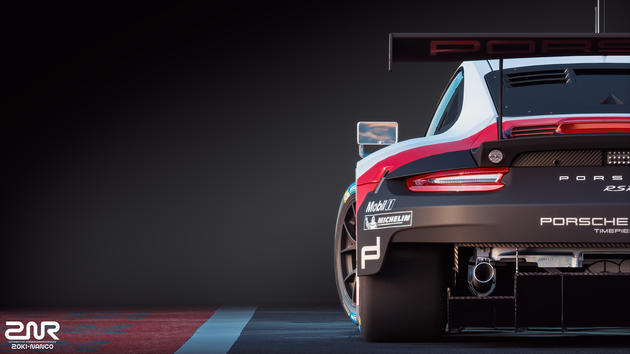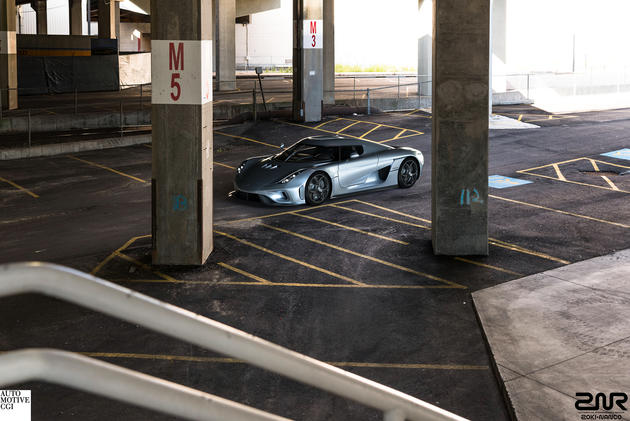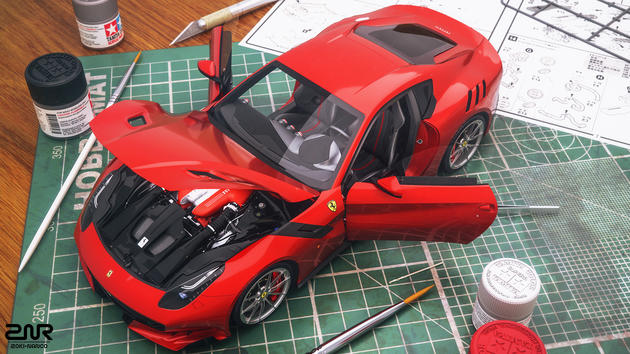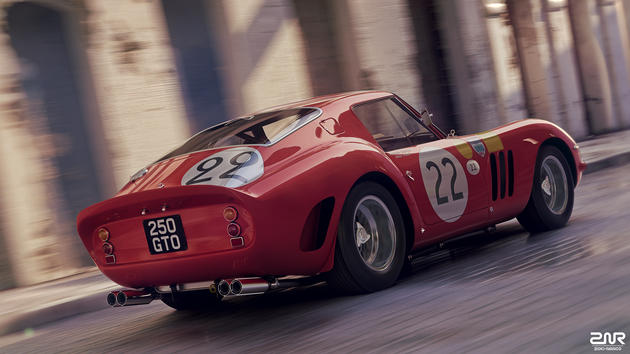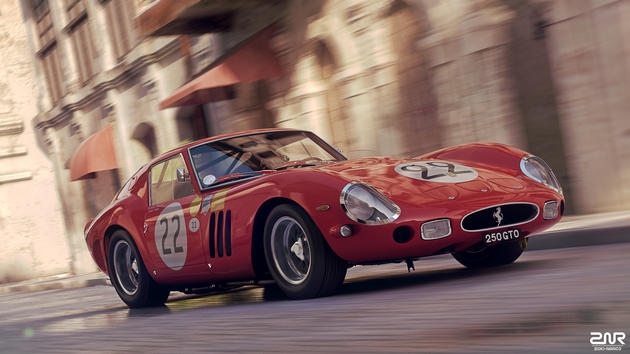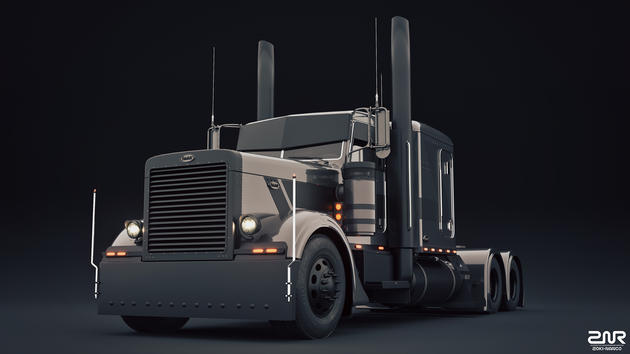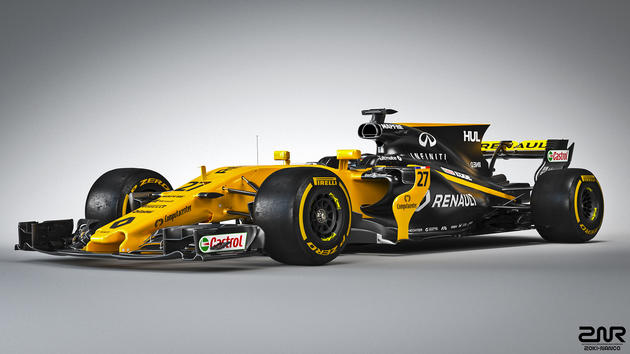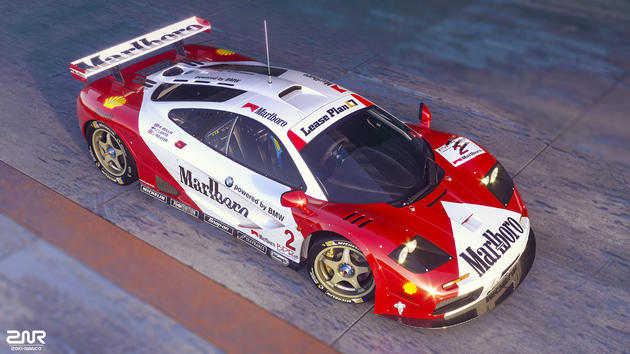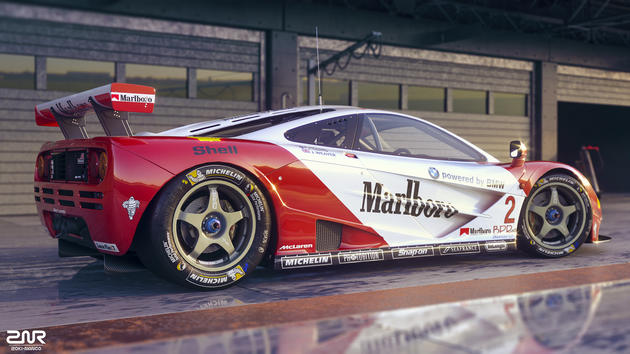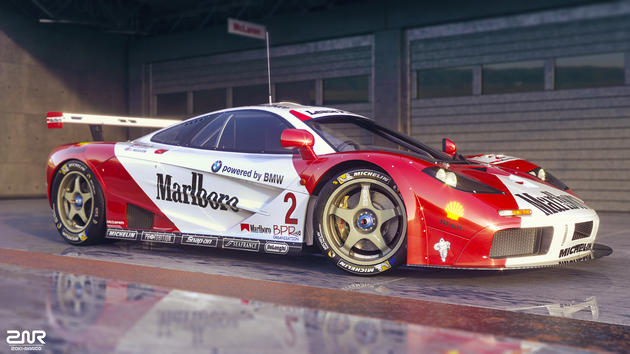Hyper-Realistic 3D Cars by Zoki Nanco
Sep 7 2018
We're pleased to introduce Zoki Nanco – one of the most talented digital artists with a focus on cars. His style is infused with unbelievable amount of attention to detail and his main goal is realism. Let's dig in!
A lot of time is spent on the selection of the best, most detailed 3D models to use a base for each one of the renders. Each one of the vehicles used is carefully selected and is always unique and special in its own way. An equally large amount of time is then spent of setting up each one of the scenes, ensuring that lighting and reflections are just right.
Pictured here is the the Jaguar XJ220. The two-seat sports car was produced by British luxury car manufacturer Jaguar from 1992 until 1994, in collaboration with the specialist automotive and race engineering company Tom Walkinshaw Racing. The XJ220 recorded a top speed of 212.3 mph (341.7 km/h) during testing by Jaguar at the Nardo test track in Italy. This made it the fastest production car from 1992 to 1993. According to Jaguar, XJ220 prototype managed a Nürburgring lap time of 7:46:36 in 1991 which was faster than any production car lap time before it.
Model particular 3D model happens to be from Forza.
The first GT-R Skyline appeared in February 1969. Called the PGC-10 (KPGC-10 for later coupé version) internally and Hakosuka (ハコスカ) by fans. Hako (ハコ) means Box in Japanese, and suka(スカ) is short for Skyline (スカイライン; Sukairain). It used the 2.0 L (1998 cc) S20 I6. This new DOHC engine (which was designed by the former Prince engineers) produced 160 hp (118 kW, 180 N m), and was similar to the GR8 engine used in the Prince R380 racing car.
Rear view of 71' Skyline GT-X The GT-R began as a sedan, but a 2-door coupé version was debuted in October 1970 and introduced in March 1971. The cars were stripped of unnecessary equipment to be as light as possible for racing, and performed well at the track.
The Toyota 2000GT is a limited-production, front-engine, rear-wheel-drive, two-seat, hardtop coupé grand tourer designed by Toyota in collaboration with Yamaha. First displayed to the public at the Tokyo Motor Show in 1965, the 2000GT was manufactured under contract by Yamaha between 1967 and 1970. In Japan, it was exclusive to Toyota's Japanese retail sales channel called Toyota Store.
The 2000GT revolutionized the automotive world's view of Japan, then viewed as a producer of imitative and stodgily practical vehicles. As a sleek, high-performance fastback, it demonstrated its auto makers could produce a sports car to rival the better marques of Europe. Reviewing a pre-production 2000GT in 1967, Road & Track magazine summed up the car as "one of the most exciting and enjoyable cars we've driven", and compared it favorably to the Porsche 911. Today, the 2000GT is seen as the first seriously collectible Japanese car and its first supercar.
In 1998, a limited 20-car run of Diablo SV's was produced exclusively for the United States market and called the Monterey Edition. The most notable feature of this edition was the use of the SE30/VT Roadster style of air intakes in front of the rear wheels, unlike the traditional (and persisting) SV style.
Several of the cars were painted in unusual, vibrant colors. One Monterey Edition, featuring an upgraded engine and brakes, was driven by Mario Andretti during the Lamborghini-sponsored "Running of the Bulls" event in California. The Monterey Edition was foreseen to be a collectible, but due to the popularity of the fixed-lamp models to follow (see below), its value did not rise significantly over time.
The Porsche 911 RSR (2017) is continuation of its 2016 version. It currently races in the FIA WEC and the WeatherTech SportsCar championship. The main difference to the previous edition is that the engine is mid-mounted, instead of the usual rear-mounted engines. This gives it better weight distribution. The space emptied by the engine at the rear is used by a bigger diffuser, giving more downforce and better cornering.
The hyper-realistic capture of the transmission-less monster that is Koenigsegg Regera!
Here's an ultra detailed scene of a Ferrari F12TDF model kit.
The Ferrari 250 GTO is a GT car produced by Ferrari from 1962 to 1964 for homologation into the FIA's Group 3 Grand Touring Car category. It was powered by Ferrari's Tipo 168/62 V12 engine. The "250" in its name denotes the displacement in cubic centimeters of each of its cylinders; "GTO" stands for "Gran Turismo Omologato", Italian for "Grand Touring Homologated." Just 39 250 GTOs were manufactured between 1962 and 1964. This includes 33 cars with 1962-63 bodywork (Series I), three with 1964 (Series II) bodywork similar to the Ferrari 250 LM, and three "330 GTO" specials with a larger engine. Four of the older 1962-1963 (Series I) cars were updated in 1964 with Series II bodies.
When new, the GTO cost $18,000 in the United States, with buyers personally approved by Enzo Ferrari and his dealer for North America, Luigi Chinetti. In May 2012 the 1962 250 GTO made for Stirling Moss set an all-time record selling price of $38,115,000. In October 2013, Connecticut-based collector Paul Pappalardo sold chassis number 5111GT to an unnamed buyer for a new record of around $52 million. In 2004, Sports Car International placed the 250 GTO eighth on a list of Top Sports Cars of the 1960s, and nominated it the top sports car of all time. Similarly, Motor Trend Classic placed the 250 GTO first on a list of the "Greatest Ferraris of All Time."Popular Mechanics named it the "Hottest Car of All Time."
Peterbilt introduced the 389 at the Mid-America Trucking Show in 2006. The 389 replaced the 379-127." The BBC of the 389 comes in at just over 131" making it the longest hood Peterbilt has ever offered. The 389 features new headlamps with a stylish wraparound design, new fender front and rear trim (the rear bracket is a styling cue back to the step on the old 351 fender). The 389 offers the same popular configurations that 379 offered. The 389 went into production in late 2006 as 2008 models and officially replaced the 379 in March 2007. The built-after-January 1, 2007 EPA compliant engines dictated many of the changes to the new Peterbilt models. The 389 model is also available in Australia as right hand drive conversion from 3rd party companies. Converted cabs are also available for export worldwide.
Just appreciating how good last year Renault R.S.17 really looked. The Renault R.S.17 is a Formula One racing car designed and constructed by the Renault Sport Formula One Team to compete during the 2017 Formula One season. The car was initially driven by Nico Hülkenberg and Jolyon Palmer. Hülkenberg joined the team after Kevin Magnussen left the team at the end of the 2016 season, while Palmer was replaced by Carlos Sainz Jr. from the 2017 United States Grand Prix onwards. The R.S.17 made its competitive début at the 2017 Australian Grand Prix. Renault R.S.17 was the first overall Formula One car to be fuelled by BP and lubricated by Castrol since Cosworth-powered Marussia MR02.
The McLaren F1 GTR was a racing variant of the McLaren F1 sports car first produced in 1995 for grand touring style racing, such as the BPR Global GT Series, FIA GT Championship, JGTC, and British GT Championship.
It is most famous for its overall victory at the 1995 24 Hours of Le Mans where it won against faster purpose-built prototypes. McLaren F1 GTRs raced internationally until 2005 when the final race chassis was retired.
I'd like to personally thank the artist for sharing his stunning work, and look forward to featuring more in the near future!
